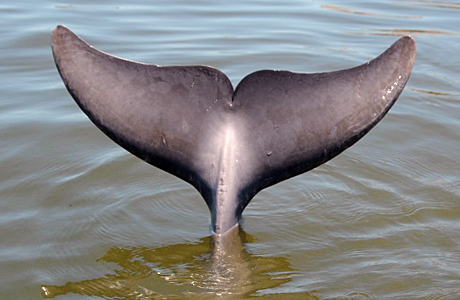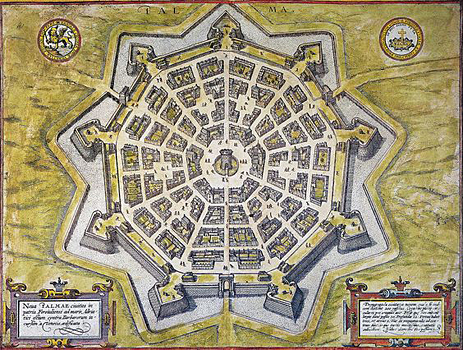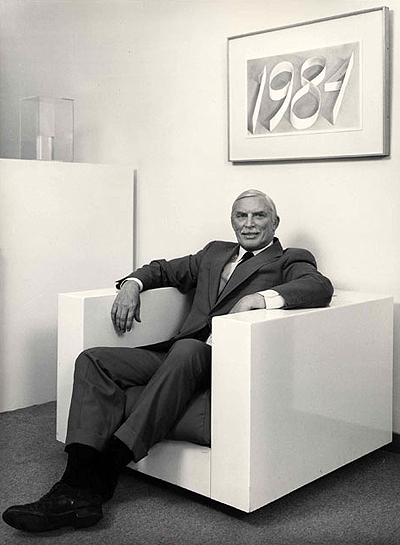The Madake bamboo growing at the Diamond Sufi Ranch went to seed around 1975, during which Kurt penned this homage to the bamboo grove and periodicity overall. Using a tale of teacher and student, he weaves a Zen-like parable of birth and death and the seasons of life. As he writes, “The scene could have been from one of those lushly filmed samurai movies.”
The Omasters - Dispatches from the Front
Communicating via the EIES terminal system employed during the 1979 Omnicon sessions in which Kurt participated clearly had an impact on him, and he employed a first-person “EIES terminal-style” in these amusing Omasters “dispatches” to Soofi Central. TROVADO is the surname of Ben Trovato, one of the cast of characters in The Omasters and a 17th century Italian expression meaning “characteristic or appropriate, even if not true.” TROVATO is aboard an intergalactic vessel, Adamantinus, at the edge of the Coal Sack Nebula when he makes this transmission.
Course Proposal: Wholistic Architecture
Kurt von Meier, Ph.D.
Present an approach to architecture in terms of its intrinsic qualities, as they correspond to precise functions of the human psyche. Analysis of canonical examples from the history of architecture parallels a fresh consideration of unorthodox designs and structures. Architectural subjects may also be visionary, fantastic, theoretical and literary. An attempt is made to transcend the straitjacket limitations of conventional lineal, ethnocentric biases, towards developing a new canon more clearly illustrating essential qualities of architecture and design. Thus, examples are frequently drawn from the work of native and vernacular builders, the "architecture without architects."
Students enrolling in this course will be directed toward practical work in compiling visual and documentary material.
Sample items from the Bibliography:
Giedion, Eternal Present
Ichazo, The Human Process
Oldenburg, Notes in Hand
Rudofsky, Architecture Without Architects; The Prodigious Builders
von Meier, Visionary Architecture
Vostell, Fantastic Architecture
Rrrose Ith
This fictional story, rather unlike many of Kurt’s others, tells a complete story—from beginning to end—and includes themes and subjects that later appear in The Omasters, which indicates this work is preliminary to the unfinished book Kurt and Walter (Clifford) Barney initiated. A main character, Rrrose Selevy (an intentionally misspelled version of Marcel Duchamp’s alter ego, Rrose Selavy) has a prominent role, and speaking with a lisp, she imparts secret knowledge to the “author,” Johnny Menotti, twin brother of Jim, who has died after racing his Triumph sports car over a cliff by the Pacific. Some action takes place at the Lilly Laboratory (a thinly veiled reference to John and Toni Lily’s dolphin research facility) and references to the masons, the Arthurian legend of Gawain and the Green Knight and Mozart’s Magic Flute round out the tale’s presciently feminist narrative arc about the coming change in male succession.
A Reasonably Quiet Theater Piece
This letter from Kurt to the Director of the Honors Program at the University of Houston may never have been sent, though this copy was found in a folder marked “carbons.” Kurt did have an on-going relationship with the University of Houston in the late 1960s; he participated in some receptions for composer Morton Feldman, and wrote the text for an art exhibit. But this letter sounds suspiciously tongue-in-cheek, and draws upon his mid-1970’s preoccupation with Omasters. He writes,
“We envisage a reasonably quiet theater piece including: demonstration of a Tantric lymphatic massage technique from the Swar Yoga teachings through Harish Jobari, making tea in the tradition of Shakuhachi Unzen, an early mythical California master and founder of the Teahouse of Necessity.”
History and Theory of the Fine Arts - A Proposal
In 1962, Kurt von Meier joined the faculty at Elam School of Fine Arts at the University of Auckland, in New Zealand. Having just acquired his master’s degree at Princeton, the ambitious and talented young American professor found himself in a relative backwater of the art world, but with the opportunity to have an impact with his vision of teaching art history. By all accounts, he was popular, if controversial. As this course proposal demonstrates, he was ready to take New Zealand by storm with a rigorous and powerful teaching plan. His professorship ended in 1964, however, not long after he wrote an article in a local newspaper criticizing the design and planning for the new Elam School of Fine Arts building. He returned to Princeton for a year, acquired his PhD., and then went on to an assistant professorship at the University of California Los Angeles.
The Omasters - Constance Chang & Ignatz Fine
Set in the sulphurous waters at a hot springs, this excerpt from The Omasters introduces readers to the musician Constance Chang (otherwise appearing as The Yellow Pearl) and Ignatz Fine, the Chasidic Mandarin mathematician and mystic. Allowing Kurt to expound on esoteric principles, the character of Fine is both cipher for Kurt and a vehicle for advancing the story.
“Like the ancient sages, Fine contemplated the changes in the dark and the light, from which he divined the movements in the firm and the yielding represented in the 64 ordered patterns of the oracle called by the name of the Book of Changes, or I Ching.”
As for Constance, “I don't understand anything you're saying,” she told Fine truthfully.”
A Pyramid Project
Kurt loved to plan projects; even if a project did not come to fruition, the entire process of planning it fascinated him. One such project was a “Pyramid Project” involving the research and coordination of constructing a 45-foot wide pyramid on the campus of Sacramento State University. An interesting discussion between Kurt, university colleague Ken Switras and others involved in the project was recorded and transcribed during the planning process in 1979; a portion of that transcript is presented here. Kurt had already found the subject of pyramids of interest, and exploring his interest within an academic setting suited him just fine.
Ch'ing Ch'ing Goes the Bell
Kurt loved teaching, honored his teachers, and felt gratitude for the entire lineage of teachers who came before him. This was true in his experience of both the academic and spiritual world. In this short, devotional homage we see Kurt’s immersion into Vajrayana Buddhism of the mid-1970s. Of the teachings, he sings, “…up from the mud & Kurt von Meier, through the waters of the Lake Danakoss, wherever it might be as in the Taoist Water Wheel "reversing the flow" of the Golden Light within, onto the lily/lotus flower…”
Corporate Conscience
In this segment from the pinnacle of his work and study, his 350,000-word opus, A Ball of Twine: Marcel Duchamp’s With Hidden Noise, Kurt expounded upon matters historical, ecological and social, extensively quoting Doctor Helen Caldicott (above), whose many books warning about the dangers of nuclear weapons and corporate greed earned Kurt’s admiration. Kurt’s own views matched Caldicott’s, as noted in this excerpt.
“If destruction of the global ecosystem is at all a ‘business,’” he writes, “then it is a bad business and must stop. If the nature of the job leads to leeching lead into groundwater, producing generations of sickly, sad and suffering children with their poor brains malformed and their bodies wracked with wretched pain, and poisoning the Earth itself, then these are jobs no one should be doing.”
Study and Travel - 1975
“Refugee cultures reflect, in their adaptation to new spatial surroundings, the temporal changes undergone by cultures which remain in place. The refugee is a 20th Century archetype in which we may see our own process of transformation; like the Hopis, we are refugees in our own country.”
This quote is included in a three-page summary of Kurt’s plans, perhaps in light of an upcoming sabbatical leave. It provides some historical information about Kurt’s activities, but also adds to the considerable store of his written material focused on archteypes, transformation, Laws of Form, and Tibetan Buddhism.
Design of an Experiment Using Fourier Transform
Long before the advent of Photoshop filters like “Gaussian Blur” (a form of Fourier Transform shown above), Kurt was fascinated by such transformations, and curious about the underlying archetypal information contained within them. His interests in the visual world merged with his interests in the mathematical world, and with his colleague Clifford Barney, in 1976 he conceived of an experiment to potentially identify archetypal truth.
In their proposal, they write, “Fourier analysis of the optical transforms will be of importance in showing the deep mathematical structure manifested in cultural forms. Thus may the temporal be related to the universal.”
Following the explication of the experiment, an addendum discussing fifth-degree equations, Laws of Form, Pascal’s Triangle, and Fritz Perls’ five “layers” of personality was included.
Exhibition Ideas
While an Assistant Professor of Art History at UCLA during the mid-sixties, Kurt von Meier also had responsibility for organizing and planning exhibitions at the university. This list of exhibition ideas was prepared by Kurt at that time, and in retrospect anticipated the shift of paradigm in the art world from “old masters” and “abstract expressionists” to more contemporary forms and materials. Notably, the gallery opening Kurt organized for an exhibit of sculptures by Harold Paris included a number of ideas on this list: four rock bands playing simultaneously accompanied by a “psychedelic” light show. Hyperlinks to later activities initiated by Kurt related to this list of ideas — planned events or articles in magazines for example — have been added.
Lecture: Patterns, Numbers, and Whole Systems - 1975
In this wide-ranging lecture Kurt takes his class through a journey of myth, art, awareness and “the divinity within us.” Recorded in 1975, this lecture reflects Kurt’s interests at that time, and as such fairly represents themes he continued to explore for the rest of his life. Variously straight-forward and serious to convoluted and funny, over the course of one hour and twenty minutes he wanders across the terrain of physics, number theory, perception of color, linguistics, consciousness, the periodic table, gold, carbon and “whole systems.” (Note: There is a slight, intermittent buzzing in the recording but Kurt’s words are easily heard.)
ARCTEX Relational Database Project
The late 1970s were a particularly creative period for Kurt, both in terms of personal creativity and professional academics. In this project proposal, Kurt describes what we now refer to as a Wiki, a hyperlinked relational database. In this case, his plan to was construct a database focused on architecture, but also linked to various courses he planned to teach at Sacramento State University in upcoming semesters.
He writes, “The unique characteristic of the ARCTEX project is an emphasis upon generic architectural concepts as a way of mapping architecture to other models of whole systems...A central and recurrent idea in the history of art and architecture is that the work as a material manifestation may be read as a map or model of a whole system.” In addition, “A planned example to be worked in detail is based upon the symmetry set based on the number nine…”
Letter to SFMOMA Curator Henry Hopkins
Henry Hopkins, painter and museum curator (now deceased, 1928-2009), was instrumental in establishing arts and architecture programs at UCLA in the early 60s, was the director of the LA County Museum of Art, and as such established a cordial relationship with Kurt von Meier, who was teaching art history at UCLA in Southern California at that time.
This letter from Kurt to Hopkins dates from 1983, when Kurt was making plans for his sabbatical leave of 1984 and SFMOMA, then under the leadership of Hopkins, was looking at recruitment for a museum project. It’s an amusing and typically quirky von Meier missive which recounts Kurt’s history (in part) at UCLA and his self-evaluation as a “mythopoeic character.”
Omnicon on Superliterate Societies
In 1979 Kurt participated in a group forum “online,” an “Omnicon” open to invited parties provided access to what was an early precursor to the World Wide Web. Sponsored by Omni Magazine, (now defunct), over a ten-week period, utilizing the EIES (Electronic Information Exchange System), the topic for discussion was Superliterate Societies, ie: reading and writing via computer code (Fortran, hence the warning ‘only 57 lines may be used for this text’), use of a connected terminal, and the issues that might arise from it, such as elitism. One participant was Kurt’s pal Walter (Clifford) Barney, and this gave Kurt the opportunity to also toss his many ideas into the online mix, which he did with enthusiasm. Again, in 1979 we find Kurt ahead of his time, as his Omnicon comments about the environment clearly indicate.
“Transcending belief is the task of consciousness in coming to recognize itself. All of which prompts a few searching inquiries--specifically about the four "great killers" in the present history of our watery planet. They may be identified as pollution, population, climatic change, mismanagement of the earth's resources. …The problem is not running short of fossil fuels, it is burning them.”
The OMASTERS - The Book Proposal
There really was a book proposal prepared for The OMASTERS. It was sent to literary agent John Brockman, who at the time, and since, has represented a number of well-recognized authors, and has even authored books himself. Various sample chapters have been included in this website, but this book proposal demonstrates the ways in which those chapters fit into an overall scheme.
As noted in the proposal, “The frame story unfolds as three interlacing accounts of THE OMASTERS in action, featuring Primo the Fool, Woody Nicholson and Shakuhachi Unzen, in respectively a space opera, a celebration of the myth of America, and an East-West fantasy farce. Historical, technical and utterly fictive events are arranged as mirrors in a fun house to catch the play of real and imaginary values. Through the warp of science and scholarship we shuttle the thread of fantastic delight.”
Art 1B Midterm Examination and Survey - 1986
This midterm examination and accompanying student survey provide excellent examples of the thought and effort Kurt put into his teaching. The survey questions are particularly revealing, as they provide an insight into how Kurt aspired to teach and the ways in which he hoped to influence and inspire his undergraduate students. For example, “Do you feel the instructor sufficiently encouraged the class to take notes? Study slides? Do reading? Use the library and slide library facilities? Maintain awareness of contemporary media? Relate to outside activities and events (galleries, exhibitions)?” or “Have you read the Bill of Rights?”
To Members of the Academic Council
In 1995, efforts were made by the administration to eliminate the graduate program in Art History at Sacramento State University. At that point, Kurt had been teaching there for roughly twenty-five years, and mounted a defense of the graduate program’s value. In this “memorandum” Kurt writes, “With the addition of a new Ph.D. art historian to our faculty this Fall, it would seem to be exceedingly unwise and untimely to terminate graduate art history studies at CSUS, most especially since the achievements of these young scholars--together with the work of earlier, and of current, art history students--promise to reflect such a distinctive and positive light on both the department and the university.”





































